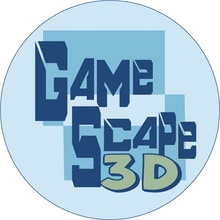3D Printed Shaped Lithophanes, Have you ever wanted to bring your photos to life?
How about giving them a new purpose or even incorporating them into different objects you use every day?
By now you have more than likely heard of what a 3D printed Lithophane is. A century’s old technology brought to life into the modern age with 3D Printing.
What if you could create your 3D Printed and Custom shaped Lithophane in any design you wanted?
Why 3D Print a Shaped Lithophane
Bring your 2D photos into the 3D Printed World.

Without rehashing too much, a lithophane is a photo or image that displays monochrome images on various materials. Available materials for Lithophanes are ceramic, porcelain, wood and 3D printed plastics.
With 3D printing, darker portions of the lithophane use more material in specified areas while lighter areas will have less material extruded. There are newer and better applications being developed continually to accommodate this process.
The main program I used to take advantage of for this process is an application called Luban. It is a powerful piece of software and was not even on my radar at the time for making lithophanes.
I was using it to chop up models for re-scaling and printing larger than my current machines could do in a single print. But recently the creator of the software – Lujie Chen has been adding some powerful features into the software.
Creating a lithophane is not rocket science, but there are many factors that one needs to know when creating one. You need to pay attention to several key components when aiming to create the best 3D printed Lithophane you and your Printer can print.
Keep it Simple and Fun with 3D Printing
Imagine – Innovate – Inspire

For simplicity’s sake, I base this article on 3D printing with standard PLA filaments – mostly white, but with additional modifications in your slicer settings – other colours and materials are fun to experiment with.
I print my current Lithophanes on my slightly changed Creality Ender 3 (Special Edition). These lithophanes on my Ender 3 instead of my Prusa MK2S as I wanted to ensure that this process does not require an expensive high-end printer and could achieve the same results on a lower cost but excellent quality budget printer.
I need to iterate at this point I am not sponsored by Lubanor Simplify3D and purchased both applications with my money. It should also be noted that this process is not unique to Luban or Simplify3D, as you can use any paid or free Lithophane creation software and Slicer.
The trick of the Slicer
The process to create a “shaped” lithophane is just tricking your slicer and one I am sure that others have tried in the past. I did not create the means to perform this hack. I discovered a method on how to do it quickly and with no added costs to the maker. The creation of the shaped lithophane is easy and painless.
At the time of writing this article, the creator of Luban, with the information I have provided and the help of other members of the Luban Facebook group. Since created a tutorial for creating a shaped lithophane within the Luban Application. I will not go into great detail on the actual creation of a lithophane, as many tutorials explain the process.
Quick and easy – Gray Scale
You can use this quick and easy method if you wish to create a 3D printed lithophane with no other software, other than your slicer and whatever Image editing software you choose. I base this tutorial on using Simplify3D and an online Image Editor called BeFunky.
Befunky has a free and paid version. One of the main things to remember when creating or manipulating the image you will use for your lithophane is that you will want to make sure we convert it to grey scale.
When you further manipulate your image in your editor, that you have more control over the various gradients in the picture. Once you have completed editing your image, you can import it into your choice of Lithophane software.
I base my tutorial on creating a flat style Lithophane. I have made this process so that the many innovative people in this hobby – industry can take it and further develop the process and integrate it into other processes.
The Settings
Don’t Forget to Experiment
After you have created your new Lithophane, this is where it gets easy. Import your Lithophane into your slicer and make sure it is perfectly flat and in a horizontal orientation on the virtual print bed in your slicer.
The settings here are not etched in stone (or in this case – Extruded in plastic) but there are some settings you will want to make sure you are close to on the settings.
Keep in mind, this may not always give you the optimum results for your lithophane, but it will be no time at all before someone perfects it. Some shaped lithophanes will allow you to print vertically with multiple Brims/Skirts, and you may need to add supports to reinforce the model.
That being said, my settings in Simplify3d are:
- Nozzle Diameter is 0.50 mm with an extrusion multiplier of 0.95
- Retraction Distance at 1.80 mm (I am using a Direct Drive extruder – Bowden systems will require 4.0 mm or higher)
- Retraction speed at 20.0 mm/s
- 0.1800 – 0.2200 mm Primary Layer Height (Experiment)
- Top Solid Layers 1 / Bottom Solid Layers 1 / Outline / Perimeter Shells 1 (Although there is room to experiment here)
- Skirt/Brim layers – 1
- Skirt Offset from Part (Your preference)
- Skirt Outlines 1
- Infill – 99% / Rectilinear – Infill angles at 30%
- Printing speed 45 mm/s or lower
There are some incredible YouTube videos on 3D Printing Lithophanes, and I highly recommend watching some, especially if you are new to 3D printing or Lithophane printing.
The Best things in Life are EASY!!
The final and most straightforward component to creating your new 3D Printed Lithophanes, is perhaps the most obvious that many of us have overlooked.
Once you have your model flat on your Virtual Print bed in your slicer, lower the model below the Z plane until the backplane of your lithophane disappears until it is barely visible when you look at your model direct from above. That’s it, that’s the simple trick to creating a 3D Printed customised shaped Lithophane.
It doesn’t get any easier than that. I hope that this method benefits you and that people can take a process like this and run with it. I believe that this has some very cool potential.
Happy Printing! 3D Printed Lithophanes
Have you heard of the world’s first 3D printed camper van?
The post 3D Printed Lithophane: Take your photos to 3D Print appeared first on Inov3D.









